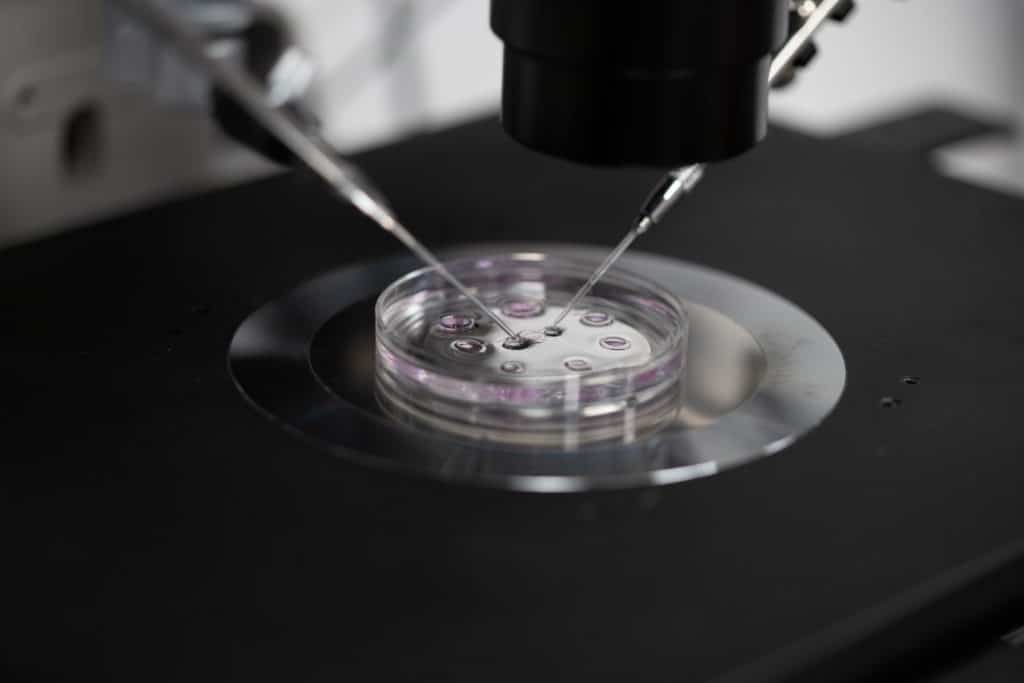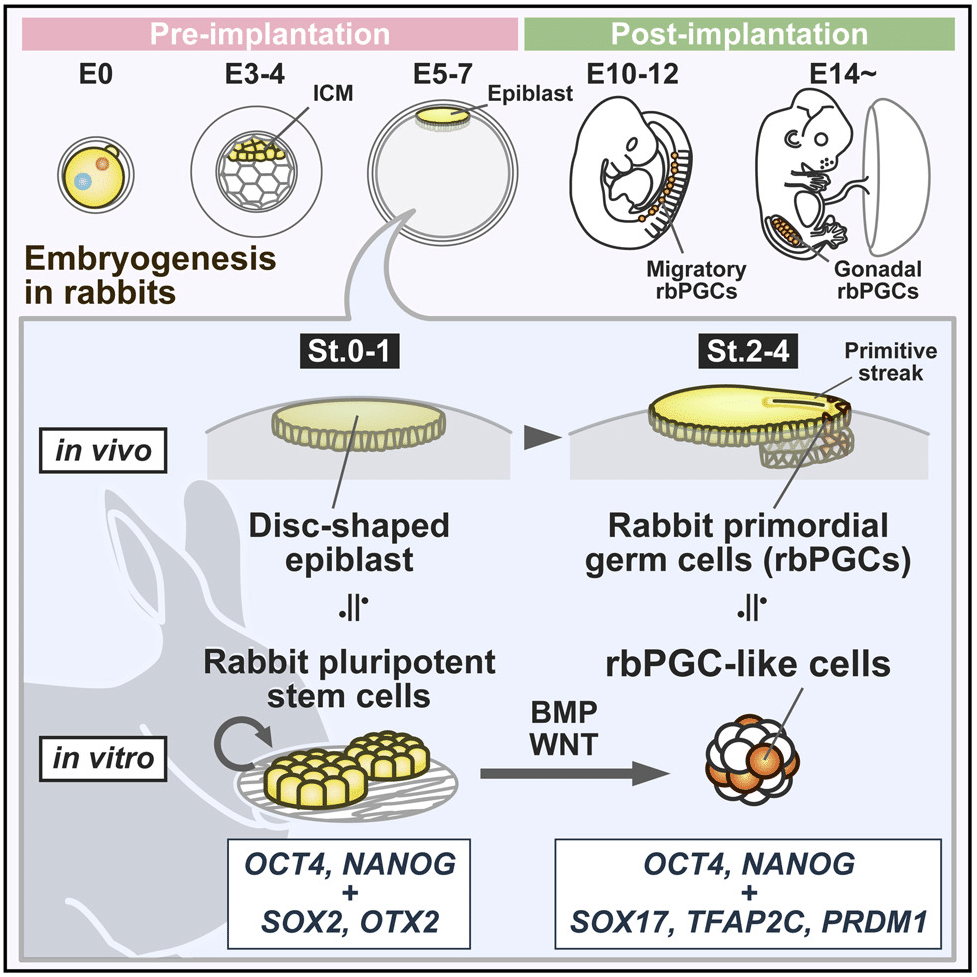Reporter cell lines for epigenetic pathways
January 20, 2022
Read more
A study by alumnus Toshi Kobayashi with the Surani group on rabbit embryos shows they provide an essential surrogate model for the inaccessible human embryo, as exemplified by observations on the emergence of primordial germ cells (PGCs) in gastrulating rabbit embryos. The study establishes rabbits as a highly accessible experimental model for other crucial aspects of early human development.
Kobayashi T et al. (2021) Tracing the emergence of primordial germ cells from bilaminar disc rabbit embryos and pluripotent stem cells. Cell Reports 37(2):109812. DOI: 10.1016/j.celrep.2021.109812

Rabbit embryos develop as bilaminar discs at gastrulation as in humans and most other mammals, whereas rodents develop as egg cylinders. Primordial germ cells (PGCs) appear to originate during gastrulation according to many systematic studies on mammalian embryos.
Here we show that rabbit PGC (rbPGC) specification occurs at the posterior epiblast at the onset of gastrulation. Using newly derived rabbit pluripotent stem cells, we show robust and rapid induction of rbPGC-like cells in vitro with WNT and BMP morphogens, which reveals SOX17 as the critical regulator of rbPGC fate as in several non-rodent mammals. We posit that development as a bilaminar disc is a crucial determinant of the PGC regulators, regardless of the highly diverse development of extraembryonic tissues, including the amnion.
We propose that investigations on rabbits with short gestation, large litters, and where gastrulation precedes implantation can contribute significantly to advances in early mammalian development.